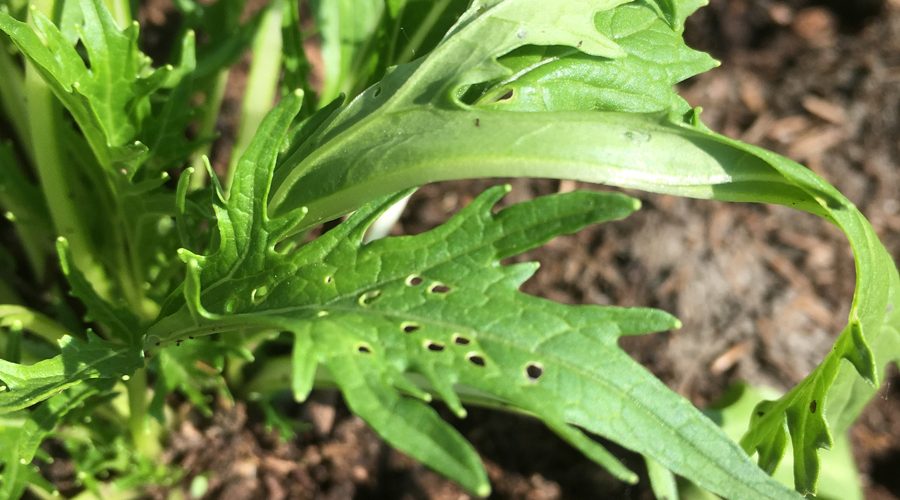This May, with the dry weather, we’re anticipating that many of our gardeners will experience tiny, jumpy little bugs nibbling pin-prick holes in leaves of brassicas, mustard leaves and rocket.
The small flea beetle has long back legs and hops away like a flea when disturbed. Young brassicas and mustard leaves (listed below) are amongst its favourite foods and they will eat several tiny holes like those pictured in a single leaf.
- Wild Rocket
- Mizuna
- Swede
- Turnip
- Cabbages
- Broccoli
Delay tactics might work: Adult Flea Beetles overwinter in the garden, and in spring they are on the lookout for food as soon as they can get it. Therefore, planting out vulnerable seedlings a week or two later can help prevent them from doing damage – this works by cutting off their food supply as they’ll have to go elsewhere to find food. Ideally you’d want to wait until the soil has been warm for at least a week or two before planting.
To keep flea beetles at bay once your plants are in the ground, follow these steps:
- Cover plants with an insect proof mesh
- Add a mulch. The mulch does two things – firstly it keeps moisture in the soil (flea beetles thrive in hot dry weather) and secondly it should stop the larvae that hatch at the base of plants from becoming adults.
- Keep the young seedlings well watered so that the soil doesn’t dry out (flea beetles prefer dry, warm soil).
- You can also try companion planting – pop some nasturtiums near vulnerable crops and with luck the flea beetles will munch away on the nasturtiums instead.
They will be less of a problem as the plant matures and later on in the summer. You can still eat the affected leaves of rocket, mizuna etc so it isn’t the end of the world, but it does make your crop look a little less impressive when it is covered in holes!

